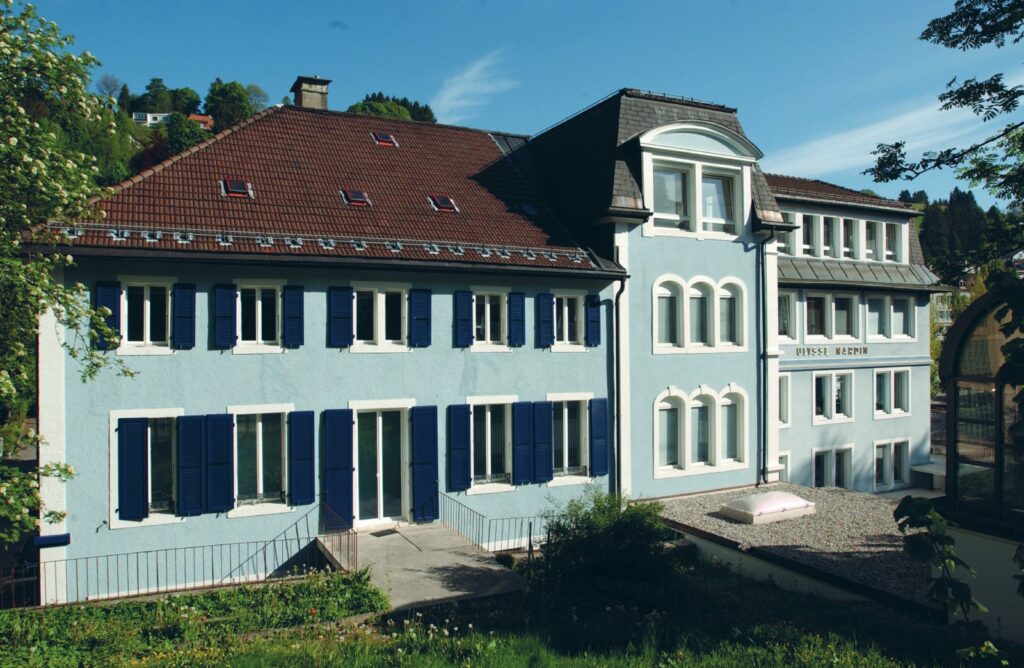Gianmarco Nicoletti, Italian brand manager of Ulysse Nardin and passionate about history (he graduated from the University of Eastern Piedmont with the famous professor Alessandro Barbero), accompanies us on the discovery of one of the oldest and most renowned brands in watchmaking, which has always been synonymous with innovation and technical cutting edge.
A few months ago Alessandro Bucchi, marketing director of Pisa Orologeria, asked me if I was available to write a short article on Ulysse Nardin, which I have the pleasure of representing for the Italian and Maltese markets.
I willingly accepted, but the question, hitherto unexpressed, was: how to briefly convey a true story, which comes from the mid-nineteenth century, originates in the mountains of the Swiss Jura, but also concerns the world of the sea (already only this, as a sailor, evokes waves of positive energy in me), is it about adventure, technological innovation, watchmaking understood as a high expression of manufacturing, but also about cutting-edge creativity?
Of course, these questions belong to my passion for watches, for the sea, for adventure, and perhaps partly explain the pleasure of being part of Ulysse Nardin that I mentioned before... But how to express the values of a watchmaking Maison that has from its beginnings it has represented a point of reference for explorers, adventurers - and consequently free spirits, of those who know the horizons of our world and do not conform to what is given?
Our history. The history of our manufacturing can provide a key to interpreting the spirit of Ulysse Nardin... So let's start from 1846!
At the age of 23, Ulysse Nardin founded his own watchmaking factory in Le Locle (yes, the factory is called after its founder, and it is the only obvious aspect of the whole story, but we must admit that its name seems to have been invented by a mastermind marketing of our times).
It is touching to read the first pages of the accounting books drawn up by Ulysse, during the first steps of creating his own factory:
“9 April 1845: Father lent me 500 francs” … His dream was about to come true!
Ulysse immediately concentrated on the production of pocket watches with complications (no one could imagine how the way of wearing a timepiece would change 60 years later, much less the Great War, which would contribute so much to the spread of wristwatches).
But above all Ulysses, and then his son Paul, identified an important need of their era. Most commercial and passenger transport, journeys to territories yet to be explored, took place by sea, and required precise timepieces. And this was, it goes without saying, also the need of the war navies.

We may have lost the memory of those times, but at the time the calculation of longitude, essential for determining the position of a ship and therefore following a nautical route, made the on-board chronometer a fundamental instrument. For centuries it had been possible to determine the latitude with the sextant, but to know the exact longitude an extremely precise timepiece was needed: an error of just one second determined a course error of 263 metres. In practice, accumulating errors meant risking shipwreck on the rocks rather than reaching a safe port, losing crew and cargo.
To simplify the idea, the marine chronometer was a bit like a modern-day GPS, but mechanical.
Ulysse Nardin marine chronometers, thanks to their absolute precision, will be supplied to more than fifty navies, shipping companies, geodetic institutes and astronomical observatories. Due to their reliability, Ulysse Nardin pocket chronometers were coveted by officers and captains of ships all over the world.
Over the years, the management of the manufacture has been handed down from father to son, continuing the chronometric and complication tradition: between 1862, when Ulysse Nardin was awarded the gold medal at the International Exhibition in London, and 1975, the Manufacture had obtained 4,324 performance certificates for marine chronometers and ten gold medals.
Then, suddenly, something unexpected. It is 1970 and very precise quartz movements begin to spread from the East. This direction seems like the only future for the world of watchmaking.
Like most Swiss manufacturers, Ulysse Nardin finds itself having to face a world that is changing, and it is a technological crisis, but also an economic, cultural and organizational one. Swiss watchmaking finds itself wavering: will electronics win, which seems to represent the future, and the futuristic?
And so let's mention another date, 1983. In the midst of what is now called the "quartz crisis", a group of investors led by Rolf W. Schnyder purchased the Ulysse Nardin watch manufacturer, which despite being in crisis had not never interrupted its existence. Schnyder's idea is disruptive, to innovate and create masterpieces of mechanical art precisely in the period in which it would seem crazy to proceed in this direction.
Schnyder is a visionary and starts a new era for the brand. In 1985, the Astrolabium Galileo Galilei was presented, an astronomical clock that entered the Maison into the Guinness Book of Records. Subsequently, the Planetarium Copernicus was released in 1988 and the Tellurium Johannes Kepler in 1992, forming the Trilogy of Time, three mythical astronomical clocks.
In 1989 the San Marco was presented, the first jacquard minute repeater wristwatch, imagined by Schnyder during a holiday in Venice with his future wife, enraptured by the vision of the Moors in Piazza San Marco.
In 1996 the manufacture presented the Marine Chronometer 1846 and the Perpetual Ludwig, the work of the watchmaking genius Ludwig Oechslin, with whom a long and ongoing collaboration began.
And 2001 arrives. It is not only the Kubrikian year of the Space Odyssey. It is the innovation of innovations in watchmaking: the Freak! The first watch in the world with an all-movement and dial, without hands and winding crown: it is the movement itself that indicates the time with its own rotation. That's not all: for the first time, silicon technology, for which Ulysse Nardin was the absolute precursor, is used in a timepiece.
In 2006 Ulysse Nardin co-founded Sigatec, a Swiss company specialized in the manufacturing of micromechanical components in silicon, as well as the revolutionary diamond and silicon alloy DiamonSil. Silicon technology is now present in all of the Maison's movements.
In 2011, Donzé Cadrans was acquired, a fascinating small company specializing in the production of enamel dials, with incredible expertise in the Grand-feu technique, Guilloché, Cloisonné and Champlevé processes.
After the era of Schnyder, who passed away prematurely, between 2014 and the beginning of 2022 Ulysse Nardin joined the Kering group, continuing his innovative path in the world of watchmaking.
In 2014 the UN-334 caliber with rapid date and time zone adjustment was launched, in 2015 it was time for the innovative UlyChoc silicon monobloc escapement system, in 2016 the UN-153 caliber was released, with an adjustable forward and backward annual calendar. 'back, and the Marine Tourbillon Grand Deck, the following year Freak becomes an entire collection. At the same time, the Blast collection was developed, a true watch of the future, with unique lines inspired by stealth aeronautical technology.
We reach 2022. Ulysse Nardin returns to being an independent Manufacture!
CEO Patrick Pruniaux leads a small group of private investors and purchases the Maison, which thus returns to its autonomy and its manufacturing, savoir-faire and intellectual origins.

Tell me the truth, isn't it a magnificent and exciting story?
Yes, I can already imagine some reflections: okay, you work for Ulysse Nardin, it's clear that you're biased.
And well yes, I admit it, I'm biased. I like the non-conformism of our watches, I am passionate about the history of the Maison. I'd like to tell you many more anecdotes...
But there is also another aspect, crucial, in fueling my passion. Patrick Pruniaux said it well in a recent article published by the Financial Times:
“We see a clear desire for independent brands. Watch enthusiasts, collectors and new customers are increasingly interested in watches that are not mainstream. We are not nor will we ever be mainstream. We will not go beyond an annual production of 15 thousand watches."

In other (my) words: we want to maintain the pioneering identity of the maison. We are not interested in common taste, we are interested in doing what we like and belongs to us: innovating, producing quality timepieces and transmitting great passion.
I mean, that's why Ulysse Nardin is so fascinating to me.
(So #frusciodelmare, #adventure, #innovation, #pride, #hereyoumentionedtheceo, but above all passion for this magnificent world)

